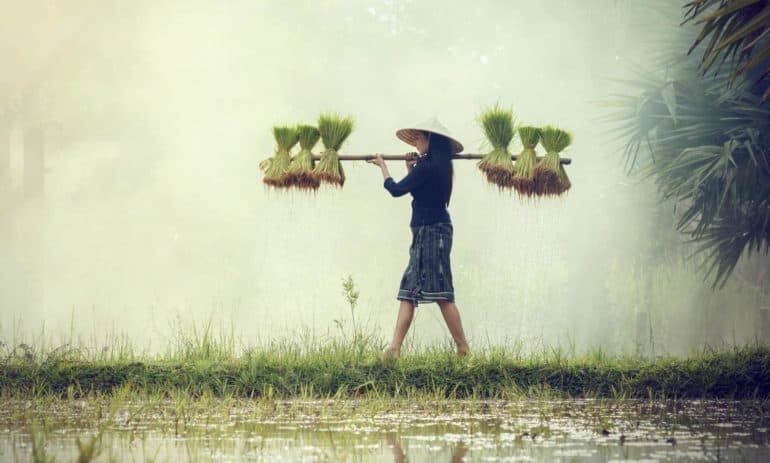The following is an excerpt from Nourished Planet: Sustainability in the Global Food System, published by Island Press in June of 2018. Nourished Planet was edited by Danielle Nierenberg, president of Food Tank, and produced with support from the Barilla Center for Food & Nutrition.
Access to food and nutrition—what might be called the nutritional order and hierarchy—is a function of power. Those with the most power tend to eat first and more compared with those with less power.
Historically, the control of food has been one of the principal sources of power over others. In the Middle Ages, the banquets of aristocratic families contrasted with near starvation among the peasants. There was little recourse for the less powerful, and in various parts of Europe, those who were caught poaching in the royal reserves or in the preserves of local lords were often sentenced to death. Countless battles and wars have been waged between farmers and stockbreeders in many regions of the world, not only over access to land but also over control of the techniques and tools used for producing and preserving food. In parts of Africa, these types of conflicts are still going on.
Food can signify power in social terms, especially regarding social prestige. But the cultural perception of that accepted meaning is fairly complex and in some cases contradictory. Certain foods have always been recognized in terms of prestige and exclusiveness, especially for reasons linked to high cost and insufficient availability. Foods such as chocolate, which is now available to nearly everyone, were once accessible only to the wealthiest people. Meat typically was consumed in large quantities only by the rich, while among the poor it was used more like a condiment, to add flavor and protein. But anthropologists and sociologists have found that the gradual spread of well-being and technology has caused a progressive tapering of the divide in food preferences and habits between the rich and the poor.
However, it’s not only food that signifies power but also land. The phenomenon of land grabbing has occurred for centuries. But today, because of climate change, migration, and other issues, the stakes are much higher. The land grabs occurring today are taking valuable land and natural resources from farmers, particularly in sub-Saharan Africa and South America. Land grabs are defined by the International Land Coalition as land “deals that happen without the free, prior, and informed consent of communities that often result in farmers being forced from their homes and families left hungry.” Both countries, including China and Saudi Arabia, and corporations have been involved in these deals, which can lead to the displacement of farming communities and the loss of food culture, as well as human rights abuses and other social problems. In the past 10 years, more than 81 million acres around the world has been sold to foreign investors. The crops grown on these lands are typically cash or commodity crops, such as sugarcane, palm oil, and soy, and 60 percent are exported instead of used by local communities, two-thirds of which are facing food scarcity problems.
Women, in particular, feel the impact of traditional power structures that tend to be discriminatory. Sociologist Marjorie DeVault highlights how the female practice of preparing food in the home, however gratifying it might be, subtly reveals the pervasive conditions of inequality and subordination. This inequality is often mirrored in agricultural communities themselves.
Women make up about 43 percent of the agricultural labor force worldwide, and in some countries they make up 80 percent of all farmers, according to the FAO. In addition to tending crops, most women, particularly in the Global South, are also responsible for seed saving, animal husbandry, grain processing, and other tasks related to growing food as well as for cooking, cleaning, and taking care of sick elders and children.
Furthermore, it’s women farmers who typically produce the food that families eat. While male farmers often focus on growing commodity crops such as maize, rice, and soybeans, women raise the fruits, vegetables, and small livestock that nourish families from day to day.
At the same time, these women have little agency over their own lives. They often lack the same access to resources, including land, banking and financial services, education, and extension services, as male farmers. In many countries, women aren’t allowed to own land or even inherit it, putting them, and their land, at risk when their husbands die.
But around the globe, women farmers are letting governments, policymakers, and their own husbands, brothers, fathers, and sons know that we ignore women in the food system at our own peril. According to the FAO, if women had the same access to resources as men, they could raise current yields by 20 to 30 percent and lift as many as 200 million people out of hunger.
Click HERE to purchase Nourished Planet today! Food Tank readers can enjoy a 20 percent discount with promo code: FOOD.













